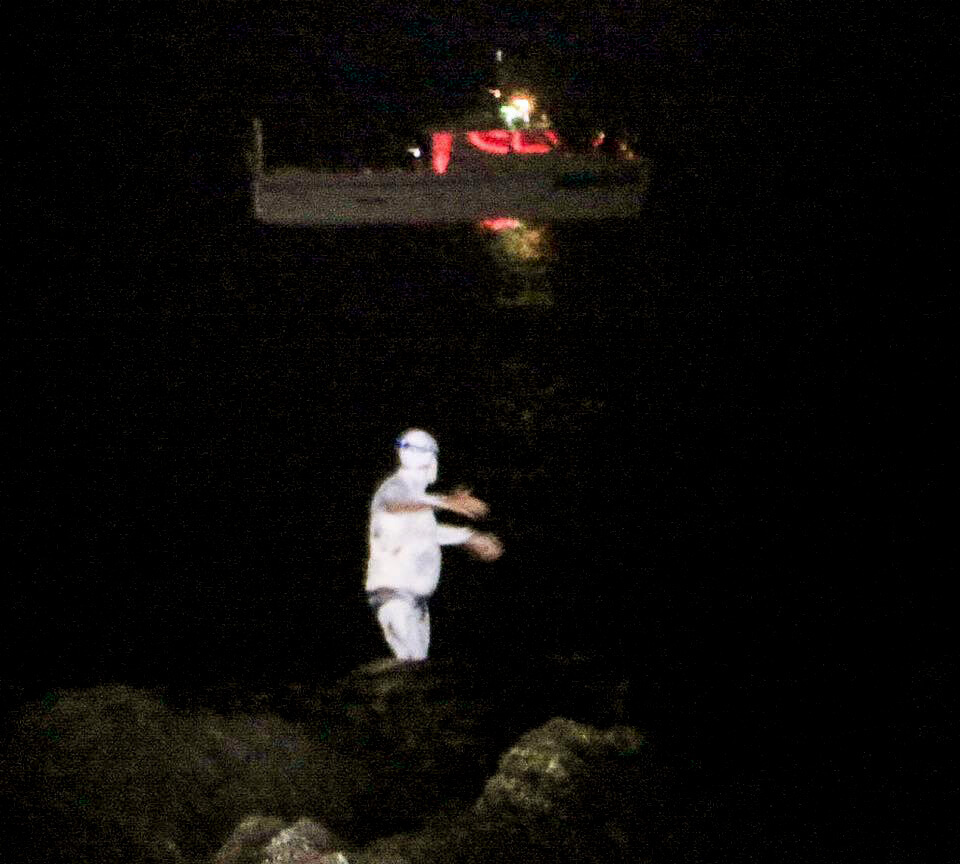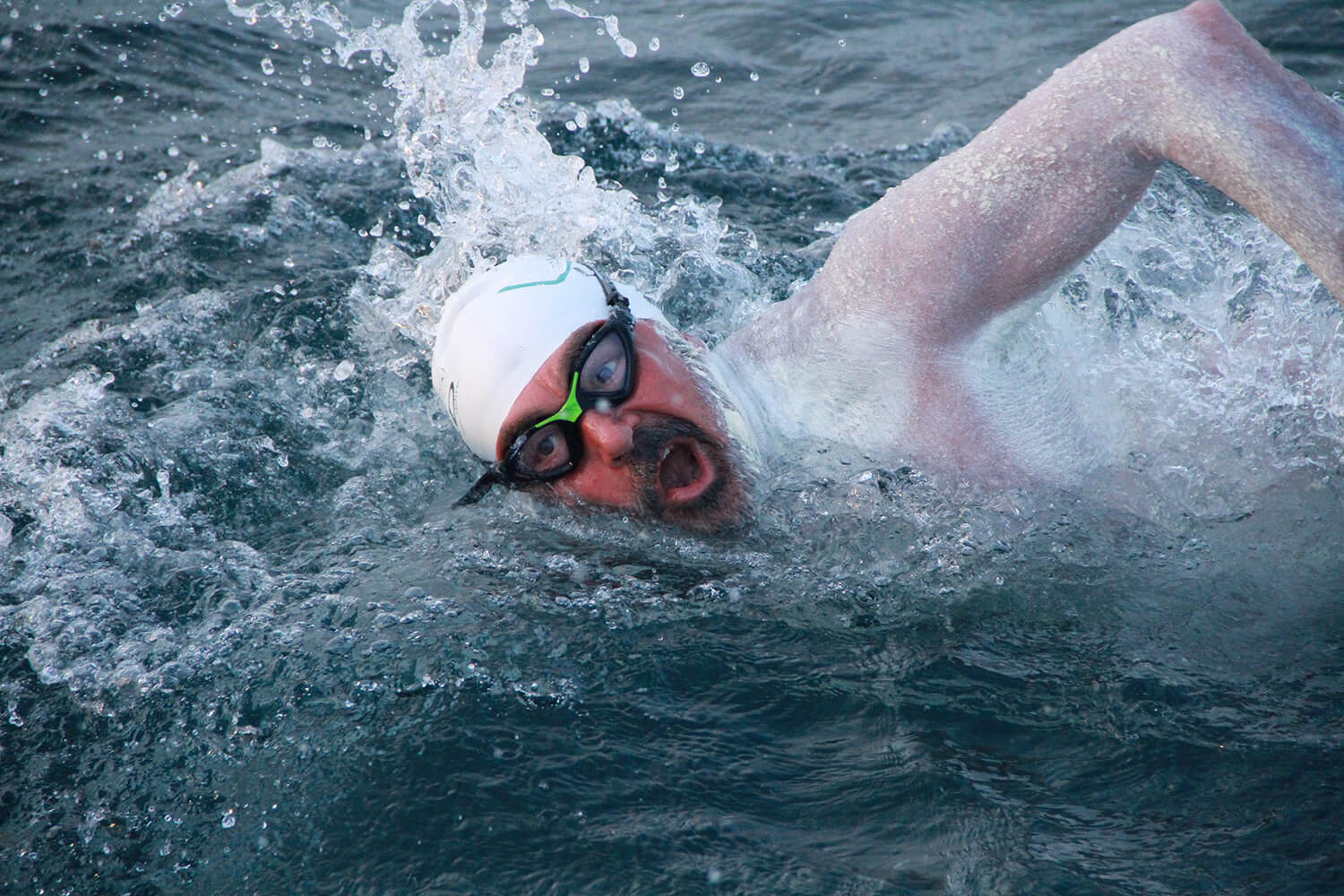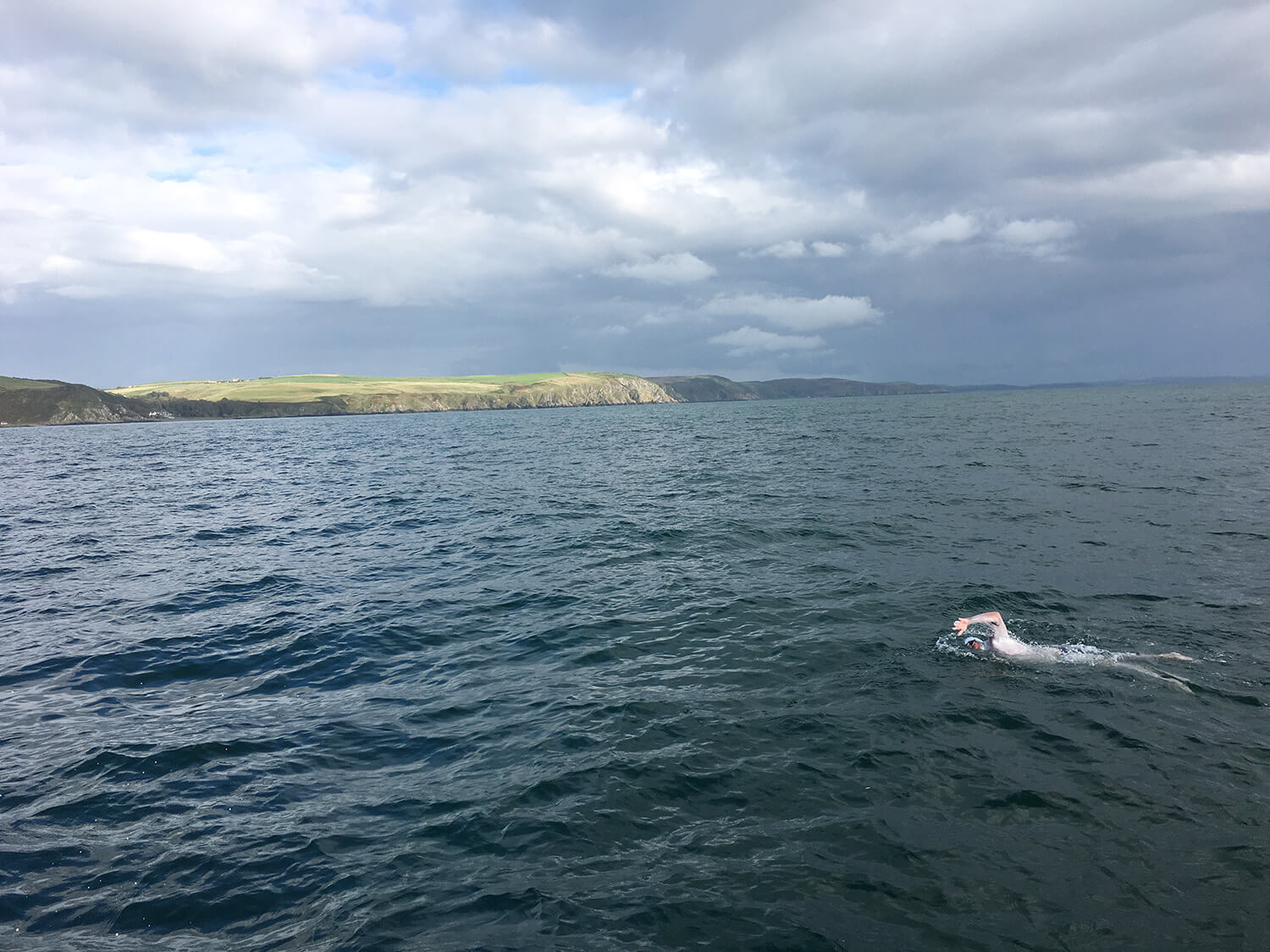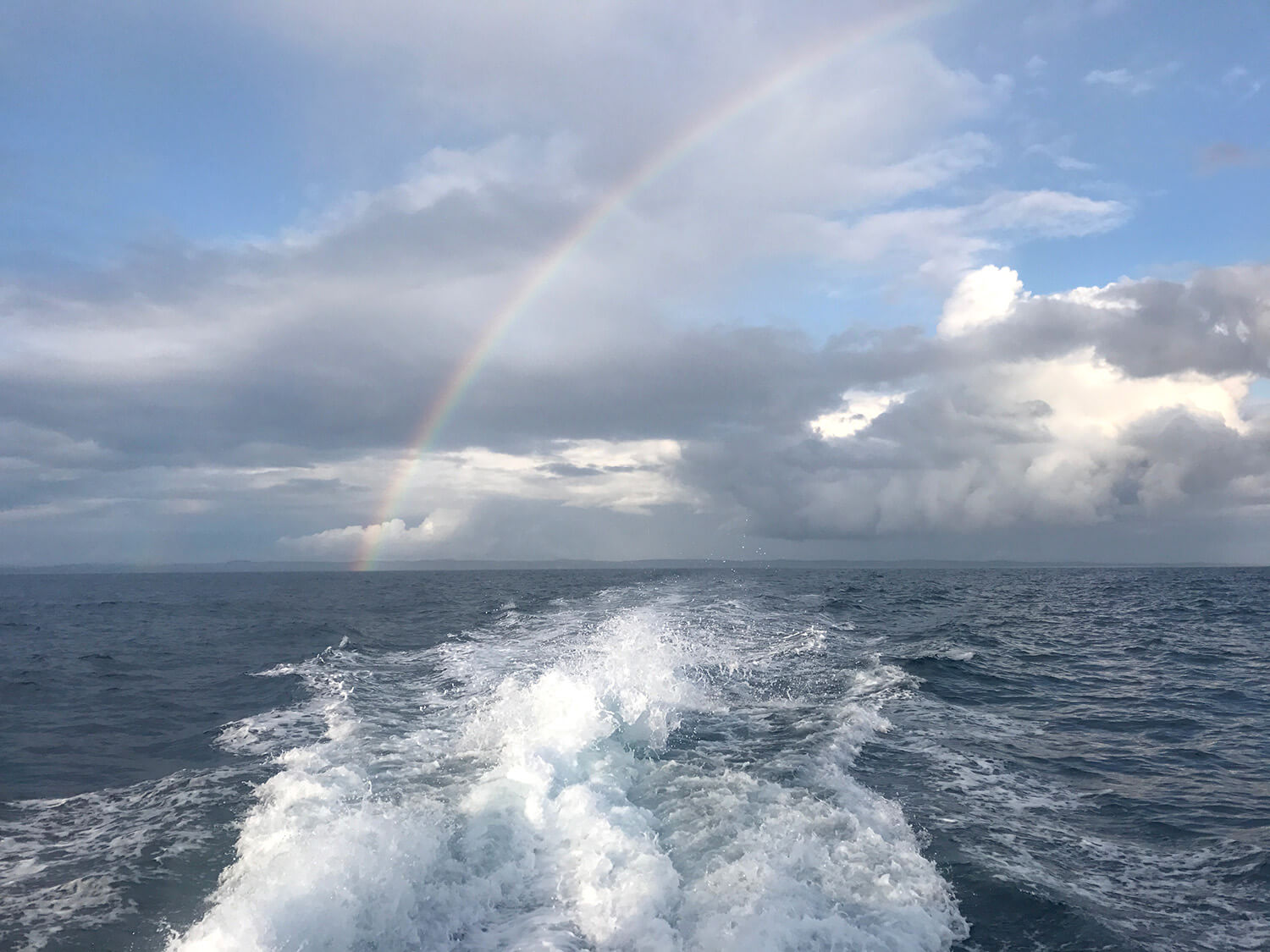swimdean North Channel swim video
North channel swim
The North Channel is considered by most, the toughest of the Ocean Seven swims in that it is very cold, is plagued by the notorious lions’ main jellyfish and involves many competing tides and currents all the way across right up until the final few metres.
If I had left this until the last, I would have invited a dark cloud of doubt and heaped more pressure on myself for the final hurdle. For this reason, I decided to get in and tackle the Northern giant now. It’s a somewhat risky strategy like confronting the schoolyard bully but the potential boost to my confidence would be an everlasting advantage.
Twelve months earlier I’d agreed a slot with Paddy Mallon, the young, dynamic head of ‘Infinity swimming’ based in Newry, Northern Ireland. Paddy boasts a team of well-trained and disciplined crew and is quickly gaining a strong reputation in the world of international swimming. We met with Paddy to discuss the swim in detail. It had been a busy season and he had a backlog of three other swimmers who didn’t get clear enough weather in their earlier windows. It was decided to send me and another swimmer off on the same day with two separate boats and that the German extreme swimmer, Matthias Kassner, would leave 15 minutes after me.
In the week leading up to the swim we found ‘The Chunky Dunkers’, who are a dedicated broad-based group of wonderful people who swim, paddle, breaststroke but mostly chatter, every day of the year, across the old fishing harbour in the beautiful seaside village of Donaghadee. Temperatures range from between 5 to 14 degrees but these are the happiest and most generous people. These entertaining short swims proved to be excellent last minute cold training. Head dunker and general swim wrangler, Martin went out of his way to include us all and soon we felt right at home. Take note future swimmers, no preparation would be complete without a dunk with these guys!
It was at one of the ‘Dunkers’ swims that we met Matthias, along with his wife Ina and support crew Kate. They had been in Ireland for a month preparing for the cold water and we struck up an immediate friendship forged in the privations of the harsh Irish elements.
Two nights before the swim, and with no warning, I was struck down with excruciating pain from a kidney stone. It was like being speared through the side with a white-hot javelin and kept me writhing in pain for almost 24 hours. I put up with the pain because I didn’t want anything to delay the swim and eventually the pain subsided to a dull ache. I felt I could manage for the swim but the pain took a toll and I was constantly worried about another attack.
The next night the swim was confirmed for the next morning. I slept well and we all gathered at the dock in Bangor harbour at 03:45 am, as instructed, along with Matthias and his crew. Vlad and Kylie had done all of the preparations, as usual, and the three of us had a last minute brief from Paddy before getting on board “Aquaholic” with Milo (crew), Richard (Skipper) and Ian (Observer).
By the time we had cruised around to the starting point, just south of Donaghadee, it was still dark. At 5:00 am, smothered in channel grease, I jumped into the cold dark water and made my way cautiously toward the shore. According to the rules every channel swim must begin from the shore with a swimmer standing clear of the water.
This morning there was a mysterious torchlight beaming from the shore beckoning me in through the jaggered rocks. It was Martin, the Chunky Dunker’s wrangler, up early with some of his comrades to guide me safely through the dangerous rocks along the shore. I must have cut a frightening figure for the uninitiated. My large, well-greased, almost naked frame glowing white from the strobing blue light on my cap. I strained to hear the whistle from the boat indicating the official start but eventually Martin called out that it had blown and so off I set across the Irish Sea to take my turn to challenge the mighty North Channel.
The water at the start didn’t seem as cold as I had expected, perhaps due to the outside temperature being one of the coldest of the season or perhaps it was due to the excitement of the morning. I started out with long slow deliberate strokes checking all systems in turn. Kidneys - a slow and dull ache but nothing I couldn't handle. Shoulders - a bit of a niggle in the right but now that I’m in it isn’t going to stop me. Neck, back, legs, hips everything was precisely how they should be and I felt strong. A large part of the struggle for success is to get to the starting point in a strong and fit condition and I was feeling good. Before I knew it, I was into my second forty-five minute feed, and the sun was coming up but struggling to break through the gathering dark clouds. I could see everyone on board was happy and I settled in to a good pace. The water was clear and the wind was following me flattening the chop.
I tell myself that every weather condition is in my favour and while this is rarely the case it helps settle my thinking into a positive rhythm. I imagine that every wave is pushing me, the wind is always at my back, the tides are always pulling me along and water is always soft and inviting.
It was 13 degrees when I started and as much as I told myself it was comfortable, it really wasn’t. I could get away with every other lie but the cold was a constant, seeping into my core and refused to be ignored. It’s the slow grind of exposure to the cold that brings swimmers undone. As you stretch out for each stroke you render your side to the water and bring the opposite shoulder out of the water and into the icy wind. Over and over again 64 times a minute, like death by a thousand cuts.
I had been worried about the jellyfish and I saw plenty of them. As the water chopped up, however, these evil gelatinous medusas sank to about one or two metres below the surface. Apparently they sink to feed off the descending plankton and I must have passed over or swam around about forty of them, none of which landed a blow.
If you picture the swim to be roughly an east to west course, with a strong southern tidal stream on the flood tide, and then furious cross currents closer to Scotland with a weaker northerly tidal current, you can begin to appreciate how this channel beats so many of us.
My instructions were to swim hard for the first three hours in order to get some ‘height’ then a strong swim across toward the west for five hours ready for a series of sprints to the end. So, hard, harder and hardest were the riding instructions.
At around seven hours, I had made excellent time and plenty of height but the day was still young. Vlad and the crew explained that if I could push hard for forty-five minutes I’d be in an even better position. So, without comment and following a thirty second feed, I put my head down and went as hard as I could meeting Vlad’s approving nods on each left-side breath. After that and expecting a rest of sorts, I was told to repeat the last forty-five minute effort and away I went again feeling a little short changed. By the time I’d done the second, I was tired and had to ease off for a while hoping to recover for my final assault on the tidal fortress protecting Scotland.
I again checked all systems and the only concern was that the cold had begun to make some ground. Swimming hard had only kept the cold at bay but it was relentless and I thought I could feel the early effects of hypothermia. I began to lose feeling in my hands, feet, legs and arms as my blood vessels dilated to keep warm blood around my vital organs. A little knowledge is a dangerous thing but extreme swimmers learn the physiological dynamics of hypothermia usually from direct experience.
The last few hours are not as clear as I would have liked, I recall seeing the cliffs and they seemed close but I couldn’t get a reliable focus on them. It seemed everyone on the boat was yelling something different and I kept my attention on Vlad’s instruction. As I later learned, they were all trying to get me to swim closer to the boat, apparently I was veering off to the right which was lengthening the distance I was going to swim.
At some stage the cold started to affect my judgment. All I knew to do was to keep on moving my arms and go in the direction of the dark wall. I can’t remember any pain, I stopped feeling cold and I was consumed by exhaustion, much of which I am convinced was from the elements. I knew I had slowed down considerably but was still on course and knew to just go on turning over my arms. By all other accounts I was just making way through the water and finally, with the currents dealt with, all I had to do was to touch the cliffs directly in front of me.
These last few metres took me some time to negotiate but eventually, thirteen hours and seven minute after setting off I did touch the Scottish cliffs. Admittedly I was confused and had nothing left in the tank but I had just become the 50th swimmer to claim the North Channel Swim prize. My team had guided and eventually nursed me through the hardest and most extreme endurance swim on the planet and when I got back on the boat fell in to their arms completely exhausted.
It took a long time for the enormity of this swim to sink in. It is sometimes easy to just chalk up another successful swim and move onto the next. In this case, however, it wasn’t until I was back in Australia with Vlad's squad that my North Channel victory was endorsed by my peers and then it felt real.
Thanks to Kylie and Vlad whose support and encouragement never wavers. I often think Kylie suffers more from these swims physically and emotionally than I do. I couldn’t do these swims without her support.
